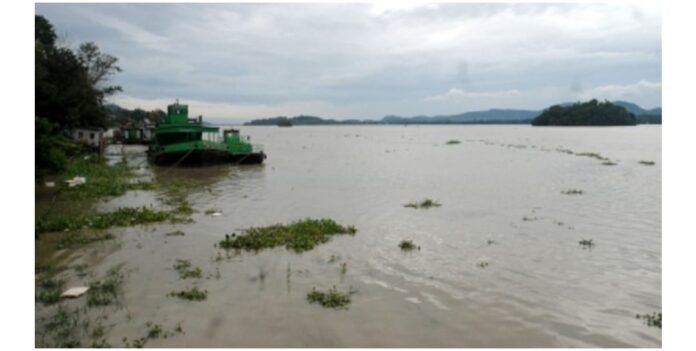Introduction:
The relentless monsoon rains in Assam have unleashed havoc in the Lakhimpur district, exacerbating the already dire flood situation. With each passing day, the region is witnessing rising water levels, leading to widespread destruction and affecting the lives of over 60,000 people. The catastrophic floods have caused immense distress, displacing residents, damaging infrastructure, and disrupting normalcy across the district.
Rising Waters and Worsening Conditions:
The torrential rains in recent weeks have caused rivers to breach their banks, inundating numerous villages and settlements in Lakhimpur. As the floodwaters continue to rise, the situation has become increasingly perilous for the affected population. Reports indicate that more than 60,000 individuals have been directly impacted, with homes, farmlands, and critical infrastructure being submerged.
Humanitarian Crisis:
The floodwaters have triggered a humanitarian crisis, leaving countless families without shelter, food, and clean water. Displaced residents have sought refuge in makeshift camps and relief centers set up by local authorities and aid organizations. The immediate needs of the affected population include food supplies, potable water, medical assistance, and essential hygiene facilities.
Damage to Infrastructure:
The floods have wreaked havoc on the district’s infrastructure, crippling transportation networks and communication systems. Roads and bridges have been washed away or rendered impassable, severely impeding rescue and relief operations. Power supply disruptions have compounded the difficulties faced by the affected communities, adding to their plight during this trying time.
Relief Efforts and Support:
In response to the worsening flood situation, the local administration, along with national and international relief agencies, has initiated efforts to provide assistance to the affected population. Rescue teams, comprising disaster response personnel, are working tirelessly to evacuate stranded individuals and relocate them to safer locations. Relief camps have been set up to provide temporary shelter, food, and medical aid to those in need.
Challenges and the Way Forward:
The magnitude of the flood crisis poses significant challenges to the ongoing relief operations. The continuous rainfall and unpredictable weather patterns complicate rescue efforts and hamper access to remote areas. The need for sustained support, both in terms of immediate relief and long-term rehabilitation, is paramount to assist the flood-affected communities in rebuilding their lives and infrastructure.
Conclusion:
The worsening flood situation in Lakhimpur district, Assam, demands urgent attention and support from all stakeholders. As the region battles against the devastating impact of these floods, concerted efforts are required to ensure the safety, well-being, and rehabilitation of the affected population. Timely aid, coupled with robust disaster management strategies, can help mitigate the suffering caused by the floods and aid in the long-term recovery of the resilient communities of Lakhimpur.




